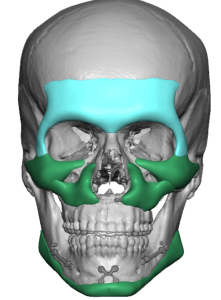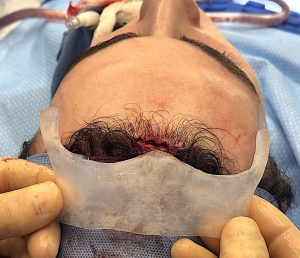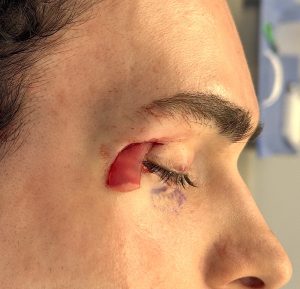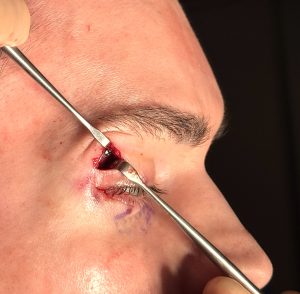Background: Brow bone augmentation is requested for various aesthetic objectives. Besides the obvious reason to augment the lower forehead due to flatter and non-descript brow bones it may also be part of an overall periorbital or eye look. In men this is most commonly known as the Hunter eyes. This refers to a specific eye shape in which the eyes are deep set, has a narrow aperture and a positive lateral canthal tilt. Such an eye look in men is considered to create an attractive and masculine appearance.
There are numerous anatomic components to the Hunter eye look but the basic one is prominent brow bones. Good or strong brow bone projection sets the frame or shape of the eye. The only reliable and effective method of brow bone augmentation for those men who need it is with a custom implant design. The intricacies of brow bone shape are more complex and it is more than picking an amount of desired brow bone projection. The brow bone has numerous thicknesses that differ from the central glabellar are to the medial and lateral brow bone mounds. Then there is its surface area coverage such as does it need to cross the frontozygomatic suture onto the lateral orbital wall and how far up onto the forehead should it extend.
The eyelids also play an important role in achieving a Hunter eye look. In the upper eyelid increased supra tarsal fullness may be needed wh ich may or may not be created by the brow bone augmentation. A positive canthal tilt and a more elevated lash line are lower eyelid needs. Procedures such as upper eyelid fat grafting, lateral canthoplasties, spacer grafts and occasionally orbital decompression are all available to help change the eye shape.
Case Study: This male previously had custom jawline and midface implants (including the infraorbital rim) to correct lack of bony projection and contour irregularities after double jaw surgery. These worked well for him and he now looked to the upper third of the face to complete his facial reshaping efforts.

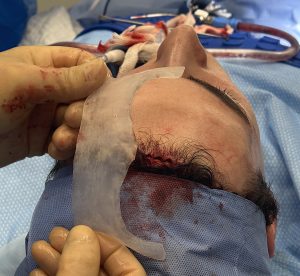
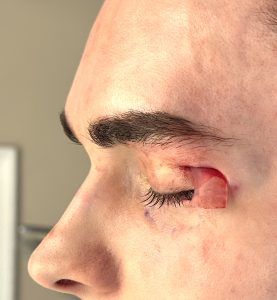
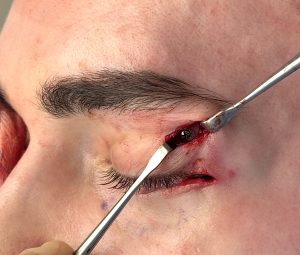
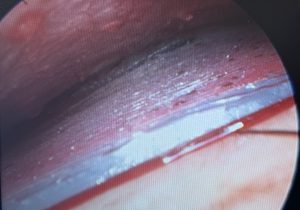
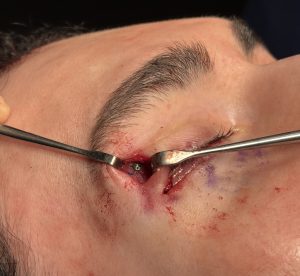
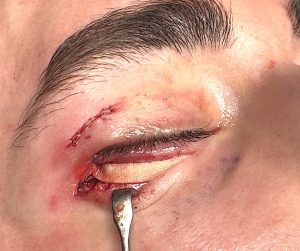
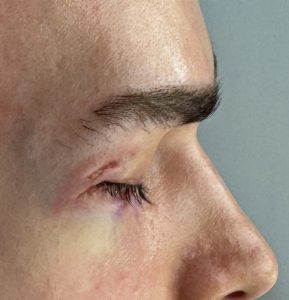
Key Points:
1) One reason male patients consider custom brow bone implants to try and achieve the Hunter Eye look.
2) Extended custom brow bone implants are placed through a triad or triangle pattern of small incisions to ensure proper placement.
3) The lateral upper eyelid incisions provide the opportunity to perform lateral canthoplasties to raise up the outer corner of the eye..
4) With the use of a lower subciliary lid incisions spacer grafts can also be placed to help raise up the lash line of the lower eyelid.
Dr. Barry Eppley
World-Renowned Plastic Surgeon



